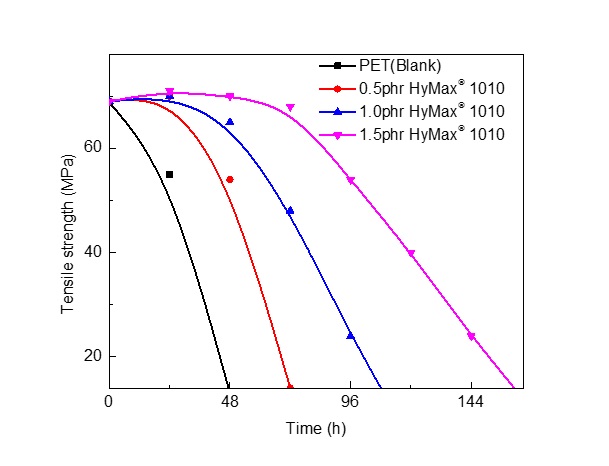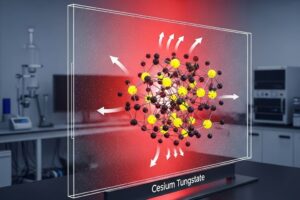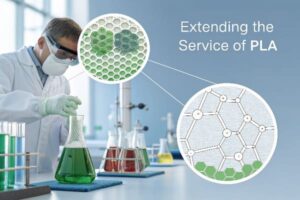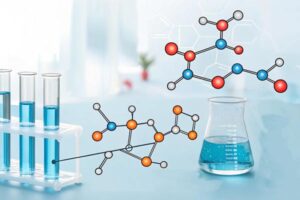Polyethylene terephthalate (PET) films are widely used high-performance plastic materials in various fields such as packaging, industry, electronics, boasting excellent physical properties and transparency. However, PET films can undergo hydrolysis in specific environments, leading to a deterioration in their performance. To enhance the resistance of PET films to hydrolysis, anti-hydrolysis agents have been introduced, offering significant advantages to the applications of PET films.
Definition and Function of Anti-Hydrolysis Agents
Anti-hydrolysis agents belong to a class of chemical additives designed to slow down or prevent the hydrolytic degradation of materials in wet or humid conditions. In the case of PET films, the application of anti-hydrolysis agents effectively reduces the rate of hydrolysis, prolonging the film’s lifespan, and improving its weather ability and mechanical properties.
see more about anti-hydrolysis agent
Applications of PET Films
PET films find wide applications in food packaging, medical use, electronic displays, solar panels, and more. Nevertheless, variations in humidity and temperature in specific environments can lead to hydrolysis in PET films, affecting their physical properties and appearance. To meet the demands of various applications, anti-hydrolysis agents have become essential technological tools.
Application of Anti-Hydrolysis Agents in PET Films
Anti-hydrolysis agents can be applied in the manufacturing process of PET films through various methods:
Blend Compounding: Mixing anti-hydrolysis agents with PET raw materials results in even distribution throughout the film, providing uniform anti-hydrolysis effects.
Surface Coating: Applying a coating containing anti-hydrolysis agents onto the surface of PET films creates a protective layer that enhances their resistance to hydrolysis.
Copolymerization: Introducing anti-hydrolysis agent monomers during PET polymerization allows them to copolymerize with PET molecules, enhancing the film’s hydrolytic resistance at the molecular level.

testing effect of anti-hydrolysis agent in PET
Advantages of Anti-Hydrolysis Agents
The introduction of anti-hydrolysis agents into PET films yields several benefits:
Extended Lifespan: Anti-hydrolysis agents slow down the occurrence of hydrolysis reactions, extending the service life of PET films.
Enhanced Weatherability: PET films exhibit improved weather resistance in outdoor or high-humidity environments, maintaining their performance due to reduced hydrolysis susceptibility.
Preserved Physical Properties: Incorporating anti-hydrolysis agents helps maintain the physical properties of PET films, such as strength and transparency.
Conclusion
The application of anti-hydrolysis agents in PET films contributes to longer-lasting performance and wider application possibilities in multiple fields. By optimizing the formulation and application methods of anti-hydrolysis agents, the resistance of PET films to hydrolysis can be effectively enhanced, providing users with more reliable solutions. As technology advances, the continued application of anti-hydrolysis agents will drive innovation and expand the use of PET films.







